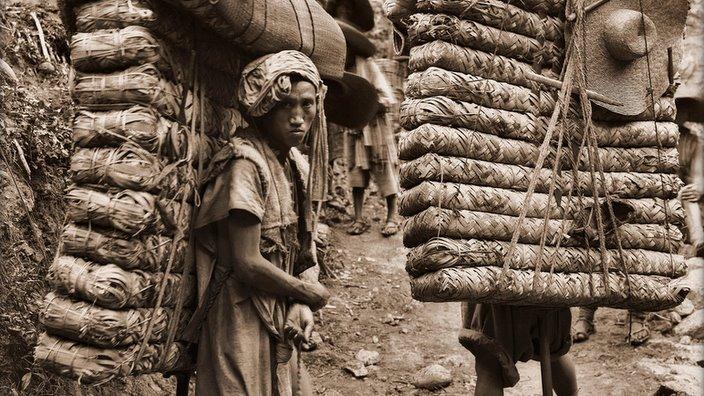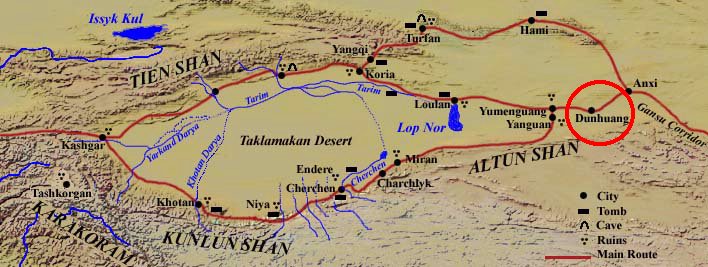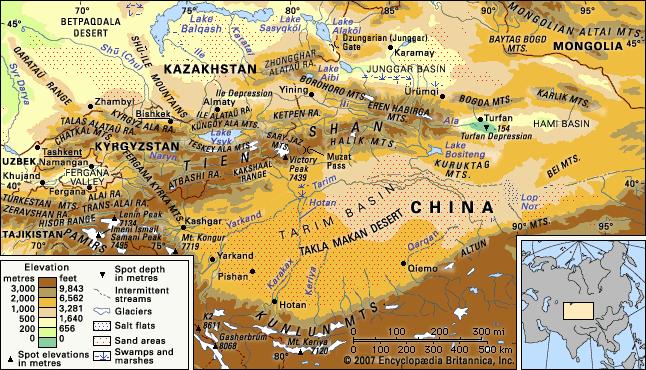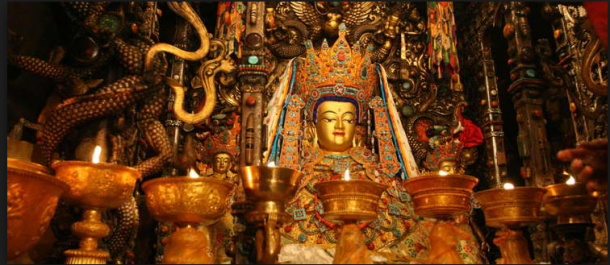7 Thing You Didn't Know About Chinese Tea
/In China, tea is more than just a beverage; it is an integral part of the country’s culture and tradition for several millennia. Tea has a lot to do with the development of Chinese society and its economy, and it has been a constant aspect of the Chinese people’s everyday life. The evolution of tea culture has progressed alongside Chinese culture, arguably making it one of the defining spirits of one of the world’s oldest civilizations.
And so, if you are interested in learning about Chinese tea, here are seven (7) interesting facts you should know about this famous beverage.
Facts About Chinese Tea
#1 — Discovered 5,000 Years Ago in China
According to legend, tea is said to have been discovered in China by someone named Shennong Shi sometime around 2,500 BC. To the Chinese people, Shennong Shi was the “Divine Farmer,” and was regarded as one of the legendary Three Sovereigns of the country. As the first known Chinese herbal doctor, he is also seen by many as the father of Chinese medicine.
Shennong Shi found a tea tree through his pursuit of collecting various plants and testing them as medicine. When he tasted this particular herb for the first time, he found that consuming tea had positive effects on the human body that could benefit those who needed to improve their health.
#2 — Originally Used as Medicine
Before the 8th century BC, the Chinese people mainly used tea as medicine before it eventually became a daily beverage. Fresh tea leaves were often boiled and consumed because ancient people thought that tea could reduce the human body’s “heat” and improve a person’s eyesight. In fact, until today, white tea, in particular, is still used in northern China as an antipyretic medicine to treat children who suffer from measles and chicken pox.
#3 — Second Most Consumed Beverage in China After Water
Sometime between 221 BC and 8 AD, tea leaves were processed by pressing them together and shaping them into balls, drying them, and storing them for later use. From time to time, people crushed these ball-shaped tea leaves and mixed them with other herbs for boiling and drinking. Eventually, this practice became a regular habit that transformed tea into a beverage that is enjoyed by many people today from all walks life in different parts of the world.
Drinking tea has become a huge part of Chinese culture that the country is filled with teahouses where people regularly meet to socialize with friends or discuss business matters with their colleagues over a good cup of tea. This is why it is not so surprising that tea is the national drink in China and that it is among the most consumed beverages in China, second only to water.
#4 — Oldest Export from China
Not only was China the first to export tea to foreign traders, the country remains to this day as the world’s largest exporter of tea. Chinese tea was traded to various British traders around the end of the Ming Dynasty when several trading posts for foreign merchants were established in the city of Xiamen in Fujian Province.
Interestingly, the word “tea” in Mandarin Chinese translates to “cha,” but in Fujian Province, the people of Xiamen referred to tea as “tay,” which the British traders spelt as “tea.” While the word “cha” was the first to spread outside of China, it was the term “tea” that gained ground in countries that spoke the English language and eventually to the rest of the world.
#5 — Several Types of Chinese Tea
In China, tea can be classified into several types, but some of its main varieties include the following: green tea, black tea, white tea, yellow tea, oolong tea, and dark tea.
GREEN TEA is considered as the most popular type of tea and is also the oldest one of them all. It is concocted from fresh shoots of tea plants and is well-known all over the world for its pale color when boiled with water and it's very strong flavor when consumed.
BLACK TEA is the second most-varied type of Chinese tea, and it is known for its aromatic scent as well as its distinctive reddish color.
WHITE TEA is the uncured and the unfermented version of green tea, and it is indigenous to the Chinese province of Fujian. This type of tea is famous for its lighter color and its tamer taste compared to the other types of Chinese tea available on the market.
YELLOW TEA is made from naturally-dried damp tea leaves, and it is easily identified not just because of its yellowish color but also because of its distinctive aroma. Regarded as premium-quality tea, it was served as a beverage to the many emperors of China as its yellow shade resembled the nation’s imperial color.
OOLONG TEA, which is also referred to as blue tea, is actually an unfermented tea made from a combination of green tea and red tea. It is popular for its taste as well as its health benefits, particularly in weight loss.
DARK TEA is a type of fermented tea believed to have originated in the city of Anhua in Hunan Province around the 16th century. The dark tea’s actual process of fermentation entails multiple steps and is different from other main varieties of tea as it is assisted by bacteria.
#6 — First Tea Monograph is Chinese
The earliest monograph about tea is called The Classic of Tea or “chájīng,” which was written by Lu Yu sometime between 760 CE and 762 CE during the dominance of the Tang Dynasty. The book contains ten chapters about the mythical origins of Chinese tea, the tools used for drying and storing tea leaves, as well as the proper preparation and consumption of tea. The book also discusses the history of tea as mentioned in Chinese literature and historical records.
#7 — Serving Tea to Elders & Guests Shows Respect
Chinese tea embodies the spirit of respect, which is why in Chinese culture, serving tea to a guest or an elder is deemed as an expression of a person’s respect and gratitude to the one the tea is offered to. This is also why serving tea is common in special events such as birthdays and the spring festival. In celebration of weddings, tea is also served by the bride and groom to their parents as an expression of gratitude for being raised by them. Tea can also be offered as a form of apology to another person and serving it is seen as a sincere display of one’s regret and submission.
Drinking tea is an essential part of the Chinese people’s social life as its regular practice is regarded in their culture as a demonstration of one’s morality and social status. Its importance as a Chinese tradition and the significant role it plays in Asian culture for many centuries have led many people today to regard the process of making tea and the method of drinking it as an art form. And so, tea is not just a staple beverage to the Chinese people, it is a symbol of a more enlightened and more appreciative way of life, which they intend to keep alive for generations to come.
Sources:
https://www.chinahighlights.com/travelguide/chinese-tea/
https://www.chinahighlights.com/travelguide/chinese-tea/interesting-things-to-learn-about-tea.htm
http://www.chinatravel.com/facts/chinese-tea-culture.htm
http://www.chinawhisper.com/top-10-chinese-tea-facts-you-might-not-know/
https://www.chinahighlights.com/travelguide/chinese-tea/tea-classification.htm
https://en.wikipedia.org/wiki/The_Classic_of_Tea
http://www.china.org.cn/learning_chinese/Chinese_tea/2011-08/03/content_23133510.htm








































